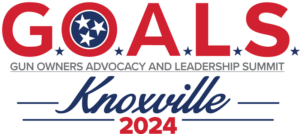12/06 Every 48 Hours
An Analysis Of Assault Rifles Traced To Crime In Maryland
by Phil Lee
The following is an analysis of an anti-semi-automatic piece authored by CeaseFire Maryland Inc. Board Member Susan Peschin.
In p2, Introduction, Ms. Peschin says:
Not coincidentally, two of America’s most notorious mass murders involved high-powered assault weapons. In 1999, the country watched as two high school students armed with assault weapons and shotguns killed 13 and injured 23 before turning the guns on themselves at Columbine High School in Littleton, Colorado. And, closer to home, in 2002, residents in the greater DC Metropolitan area were terrorized by snipers John Allen Muhammad and Lee Boyd Malvo armed with a Bushmaster XM15 assault rifle.
The FBI Crime Classification Manual calls a killer a mass murderer if he kills four or more people in close succession in a single locale, or in closely related locales. This differs from a spree killer, who kills in a series of loosely related or unrelated locations. By the FBI criteria, the Muhammad-Malvo killers were spree killers and not mass murderers, despite their killing of 10 people and wounding of three more in the DC area. Adopting the Pechin unique notion of mass murder, it is worth considering other similar crimes from our history for context.
Ms. Peschin’s idea of “two of America’s most notorious mass murder” overlooks the murder of 2,973 Americans on 9/11/2001 and many other mass murders that do not conveniently fit her mold of murder with assault weapons. Context is important to understand the social evil of mass murder. So, we list a few notorious mass murders that may not be remembered so well:
1. Andrew Kehoe killed 45 people and injured 58, mostly children in second to sixth grades, at the Bath Consolidated School, Bath, Michigan, on May 18, 1927 using dynamite and pyroto to bomb the school;
2. Howard Unruh killed 13 people and wounded three using a handgun in Camden, N.J. on September 6, 1949;
3. Charles Starkweather killed by shooting with a shotgun and stabbing 7 people between January 21, 1958 and January 29, 1958. Starkweather had killed Robert Colvert earlier (Dec. 1, 1957) in a robbery;
4. Richard Speck strangled and stabbed eight student nurses in a Chicago apartment in 1966;
5. Charles Whitman killed his wife and mother, then climbed a campus tower at the University of Texas in Austin and shot 14 others dead, also in 1966, using a common bolt action hunting rifle;
6. Juan Corona raped and murdered 25 men and buried their machete-hacked bodies in orchards owned by local farmers over a six week period in April-May 1971;
7. David Burke killed 43 people on board Pacific Southwest Airline Flight 1771 on December 7, 1987 by shooting the pilots of the aircraft to death with a revolver whereupon the aircraft crashed;
8. Richard Farley killed seven people and injured three others using handguns, a .22 rifle, two shotguns and explosives in 1988;
9. Ramon Salcido killed seven using a handgun for two and knife for 5 more in April 1989;
10. Julio Gonzales set fire to the New York City’s Happyland Club, killing eighty-seven people in the blaze on March 25, 1990 using $1’s worth of gas and a match;
11. Physics PhD Lu Lang shot three faculty members, a graduate student, Shan Linhua, a university associate v-p and, finally, himself using two handguns in 1991;
12. Timothy McVeigh blew up the Alfred P. Murrah federal building in Oklahoma City killing 167 men, women and children and injuring 850 more in the explosion on 4/19/1995; and
13. Male nurse Charles Cullen confessed to murdering 35 patients circa 2003 using poison from common medications at hospitals where he was employed in Pennsylvania and NJ.
More examples of mass murder exist, but these suffice to show it is not as rare a crime as we might all wish. However, mass murder using semi-automatic rifles is relatively rare compared to mass murder using other weapons.


